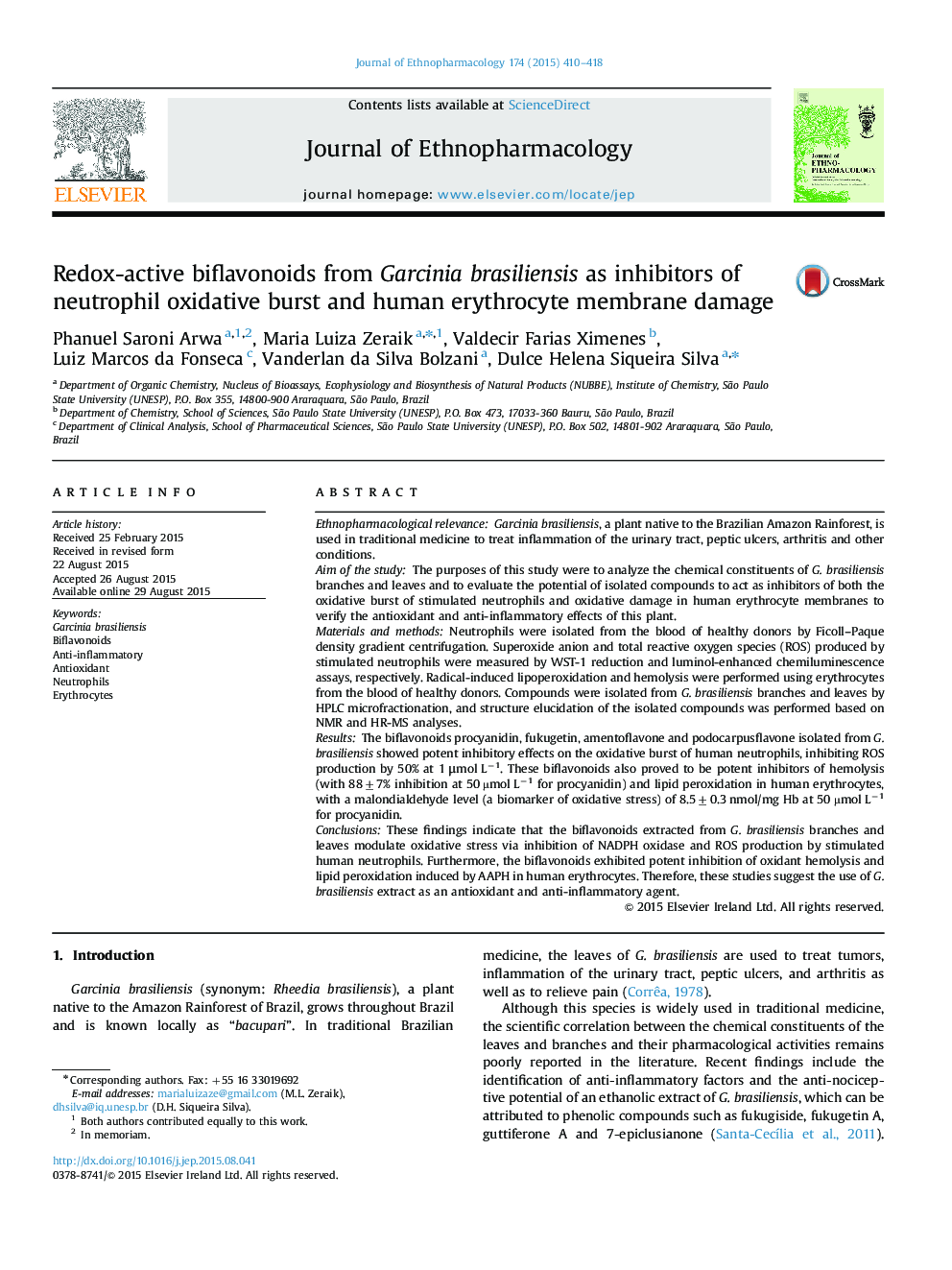| کد مقاله | کد نشریه | سال انتشار | مقاله انگلیسی | نسخه تمام متن |
|---|---|---|---|---|
| 5834767 | 1560388 | 2015 | 9 صفحه PDF | دانلود رایگان |

Ethnopharmacological relevanceGarcinia brasiliensis, a plant native to the Brazilian Amazon Rainforest, is used in traditional medicine to treat inflammation of the urinary tract, peptic ulcers, arthritis and other conditions.Aim of the studyThe purposes of this study were to analyze the chemical constituents of G. brasiliensis branches and leaves and to evaluate the potential of isolated compounds to act as inhibitors of both the oxidative burst of stimulated neutrophils and oxidative damage in human erythrocyte membranes to verify the antioxidant and anti-inflammatory effects of this plant.Materials and methodsNeutrophils were isolated from the blood of healthy donors by Ficoll-Paque density gradient centrifugation. Superoxide anion and total reactive oxygen species (ROS) produced by stimulated neutrophils were measured by WST-1 reduction and luminol-enhanced chemiluminescence assays, respectively. Radical-induced lipoperoxidation and hemolysis were performed using erythrocytes from the blood of healthy donors. Compounds were isolated from G. brasiliensis branches and leaves by HPLC microfractionation, and structure elucidation of the isolated compounds was performed based on NMR and HR-MS analyses.ResultsThe biflavonoids procyanidin, fukugetin, amentoflavone and podocarpusflavone isolated from G. brasiliensis showed potent inhibitory effects on the oxidative burst of human neutrophils, inhibiting ROS production by 50% at 1 μmol Lâ1. These biflavonoids also proved to be potent inhibitors of hemolysis (with 88±7% inhibition at 50 µmol Lâ1 for procyanidin) and lipid peroxidation in human erythrocytes, with a malondialdehyde level (a biomarker of oxidative stress) of 8.5±0.3 nmol/mg Hb at 50 µmol Lâ1 for procyanidin.ConclusionsThese findings indicate that the biflavonoids extracted from G. brasiliensis branches and leaves modulate oxidative stress via inhibition of NADPH oxidase and ROS production by stimulated human neutrophils. Furthermore, the biflavonoids exhibited potent inhibition of oxidant hemolysis and lipid peroxidation induced by AAPH in human erythrocytes. Therefore, these studies suggest the use of G. brasiliensis extract as an antioxidant and anti-inflammatory agent.
313
Journal: Journal of Ethnopharmacology - Volume 174, 4 November 2015, Pages 410-418